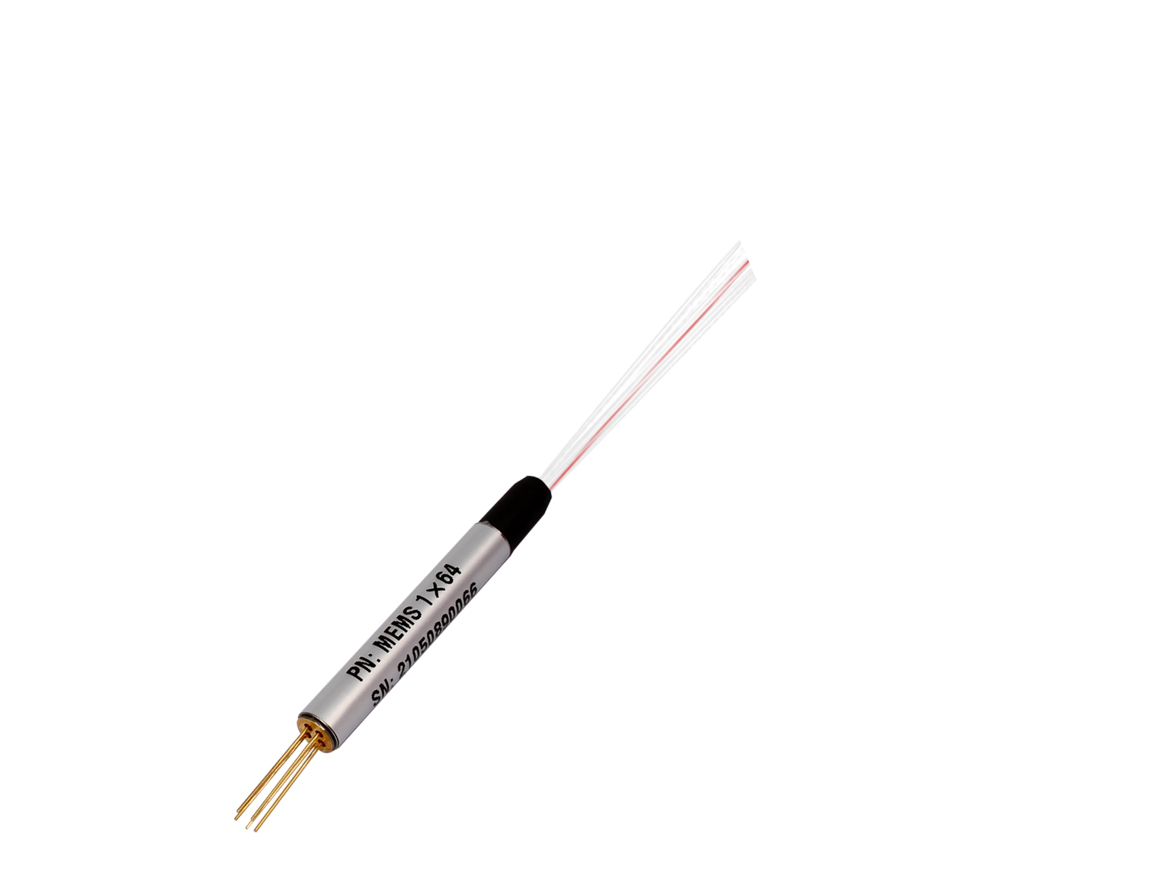460, 532, 700, 850, 1310, 1550nm MEMS optical switch
MEMS optical switch is a key component in modern optical networks and optical systems. Its performance directly affects the overall performance of the system. With the diversification of application scenarios, MEMS optical switches that can operate in a wide wavelength range of 460nm to 1550nm are becoming more and more important. Different wavelengths correspond to different application requirements: 460nm and 532nm are commonly used in biomedicine and laser display; 700nm and 850nm are mostly used for short-distance data communication; 1310nm and 1550nm are standard wavelengths for optical fiber communication.
Basic principle of MEMS optical switch
MEMS optical switch uses movable micromirrors or other optical elements manufactured by micro-electromechanical system technology to change the optical path. Its core working principle is to change the position or angle of the micromirror through electrostatic, electromagnetic or thermal drive to achieve the switching of the optical path. Multi-wavelength operation requires that the following must be considered when designing:
Broadband reflectivity of the mirror coating material
Adaptability of the structural design to the diffraction effects of different wavelengths
Stability of the driving mechanism over a wide spectral range
Wavelength dependence of insertion loss
Technical characteristics of MEMS optical switches at different wavelengths
1. Visible light band (460nm, 532nm)
The main challenges faced by 460nm and 532nm MEMS optical switches include:
Material selection: High reflectivity dielectric mirror coatings are required, usually TiO2/SiO2 or Ta2O5/SiO2 multilayer films
Structural design: Due to the short wavelength, higher requirements are placed on surface roughness and micromirror flatness (<λ/10)
Application areas:
Bioluminescence detection system
Laser projection display
Optical tweezers system
2. Near-infrared band (700nm, 850nm)
700nm and 850nm optical switches are commonly used for:
Short-distance data communication: such as optical interconnection in data centers
Technical features:
Metal mirrors (such as gold, silver) or dielectric mirrors can be used
Relatively loose requirements on surface roughness (about λ/8)
Good compatibility with GaAs-based optoelectronic devices
3. Communication band (1310nm, 1550nm)
1310nm and 1550nm are standard wavelengths for fiber-optic communication, and related optical switch requirements are:
Ultra-low insertion loss: usually <0.5dB
High extinction ratio: >50dB
Fast switching: millisecond to microsecond response
Long-term reliability: >10^9 switching cycles
Design challenges and solutions for multi-wavelength MEMS optical switches
1. Broadband reflector design
Achieving broadband high reflection of 460-1550nm requires:
Hybrid coating technology: combining metal film (such as silver) and dielectric multilayer film
Optimizing film system design: using non-periodic multilayer structure or gradient refractive index material
New materials: research and application of two-dimensional materials such as graphene
2. Wavelength-related loss control
The loss mechanism of different wavelengths is different and needs to be optimized:
Scattering loss: more significant at the short wavelength end, the surface quality needs to be improved
Diffraction loss: related to the spot size and wavelength ratio, the beam matching needs to be optimized
Absorption loss: material selection is crucial, especially the metal layer
3. Drive mechanism optimization
Multi-wavelength system requires the drive mechanism to have:
Stability: maintain performance under different environmental conditions
Consistency: wavelength changes do not cause position deviation
Low power consumption: especially for portable applications
Typical application scenarios
1. Multispectral imaging system
Integrated 460-1550nm optical switch can achieve:
Fast wavelength switching: no mechanical filter replacement
Compact design: replace the rotating mirror in traditional spectrometers
Dynamic range extension: cover visible to near infrared at the same time
2. Intelligent fiber network
In PON and SDN, MEMS optical switch supports:
Dynamic wavelength allocation: allocate 1310nm and 1550nm resources on demand
Fault protection: fast switching of backup optical paths
Network reconstruction: flexible adjustment of topology
3. Biomedical detection
Multi-wavelength optical switch realizes:
Multi-parameter detection: such as blood oxygen (660nm, 940nm), fluorescence (460nm, 532nm)
Micro endoscope: multi-modal imaging integration
Optical coherence tomography: fast wavelength scanning


Comments are closed